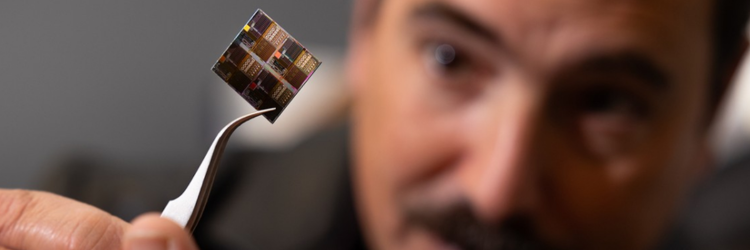
Cornell researchers have developed the smallest walking robot yet, capable of independent movement and designed to interact with visible light at the microscale. These robots, measuring just 2 to 5 microns, combine microrobotics and optical technology to perform super-resolution imaging and force measurements. Controlled by magnetically driven movements, the robots can “walk” on surfaces or “swim” through fluids.
Key Features:
- Microscale Size: Small enough to manipulate light for imaging tasks that traditional microscopes cannot perform.
- Magnetic Programming: Robots are patterned with nanometer-scale magnets for precise movement.
- Optical Capabilities: They can act as local microscope extensions, enabling super-resolution imaging by tuning, focusing, and interacting with light.

Applications:
- Basic Research: Exploring structures like DNA.
- Medical Diagnostics: Targeted imaging and sensing within tissue samples.
- Future Potential: Swarms of microbots performing advanced microscopy and sensing tasks.
The robots were developed using innovative thin-film technology and support from the Cornell NanoScale Science and Technology Facility. Researchers believe this breakthrough is only the beginning of what can be achieved by merging robotic and optical engineering at this scale.
The Potential
One potential future application for these diffractive microbots could be in real-time pathogen detection during surgery or clinical diagnostics. By integrating sensors capable of detecting specific molecular signatures, swarms of these robots could identify infections, measure biochemical markers, or even guide surgical interventions at a microscopic level.
Additionally, their small size and magnetic control suggest potential in environmental monitoring for detecting pollutants or harmful chemicals at previously unreachable scales. This could revolutionize industries like water purification and chemical safety.
Sources:
- Cornell University’s report on microscale robotics advancements.
- NSF funding acknowledgments for nanotechnology research.
- “Magnetically Programmed Diffractive Robotics,” Science, Nov. 28, 2024.
